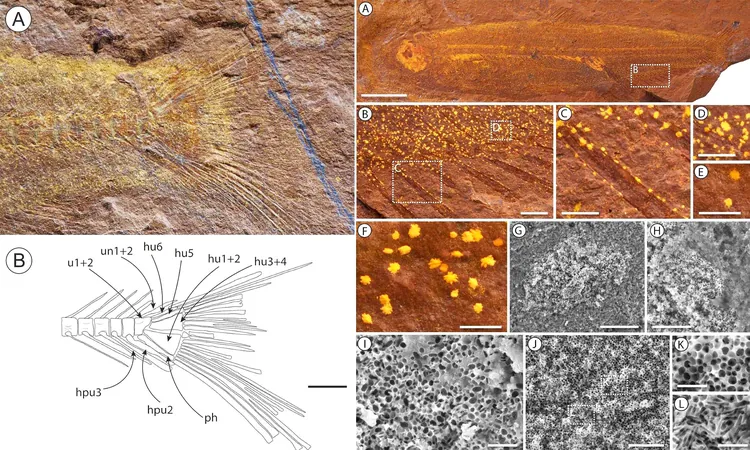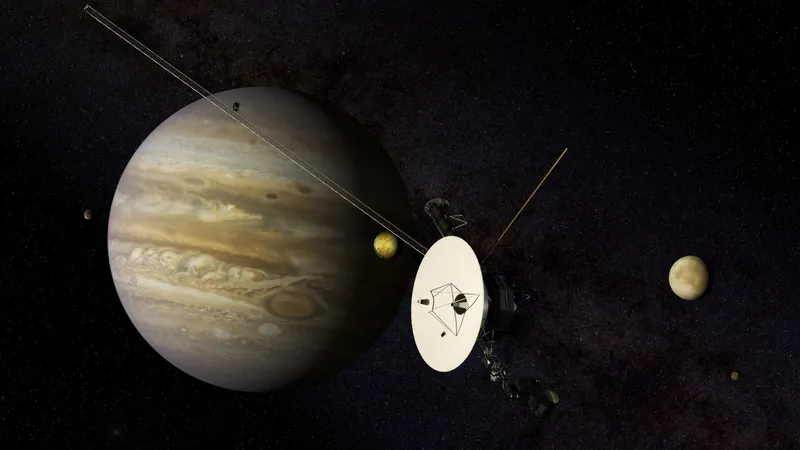
Unveiling the Past: Ancient Fish Fossil with Stomach Contents Found in Australia
2025-06-18
Author: Rajesh
A remarkable fossil discovery in central New South Wales, Australia, has unveiled a prehistoric fish, Ferruaspis brocksi, complete with intact stomach contents—a feat that has left experts astonished.
An Accidental Discovery
This extraordinary find came about purely by chance when Professor Jochen Brocks from the Australian National University split a seemingly ordinary slab of rust-colored rock. To his surprise, he uncovered a well-preserved two-inch fish, with even its stomach and pigment cells still visible.
A Glimpse into the Miocene Epoch
During the Miocene epoch, the landscape of central New South Wales was vastly different, dominated by lush temperate rainforests and expansive freshwater lakes rather than today's arid fields. The discovery of Ferruaspis brocksi, a representative of the Osmeriformes order—typically home to modern graylings and smelts—marks the first record of its kind in Australia's fossil history.
Exceptional Preservation—Thanks to Iron
What makes this finding even more intriguing is the preservation method. The fish and other flora and fauna were entrapped in goethite, a mineral that effectively locked in their features within stagnant lake water. This process enhances the preservation of delicate tissues and pigments, allowing for an unprecedented glimpse into the past.
Insight into Behavioral Patterns
Under scrutiny with a scanning electron microscope, researchers revealed distinct features of this ancient fish. Patterns of melanosomes indicated a dark dorsal side and a pale belly, suggesting it used countershading for camouflage—a strategy still observed in modern fish. The presence of bold stripes hints at schooling behavior, reminiscent of today's small smelts.
What’s on the Menu?
In a fascinating twist, the fossilized stomach revealed antennae from phantom midge larvae, alongside fragments of insect wings, highlighting F. brocksi's predatory habits. This evidence implies the fish hunted at night in open waters, showcasing its adaptability.
Clues about Ancient Ecosystems
Adding another layer to this discovery, a glochidium—a juvenile freshwater mussel—was found attached to one specimen, representing the oldest known record of parasitism in these fish. Such discoveries not only provide insights into the species' lifestyle but also help reconstruct ancient seasonal flooding patterns in Miocene Australia.
A New Era for Australian Fossils
Paleontologists believe that this discovery reshapes the understanding of Australia’s freshwater fish fossil record, which was previously thought to be insufficient for in-depth studies. With numerous specimens unearthed, scientists now have a unique opportunity to explore not just anatomical details but also behavioral and ecological insights.
Looking Ahead
Research indicates that F. brocksi existed at least 15 million years ago, coinciding with molecular studies showing a divergence between Australian and New Zealand graylings. Exciting fieldwork is planned for the upcoming dry season, aiming at deeper layers that could reveal even older species or their predators.
The full study has been published in the Journal of Vertebrate Paleontology, marking a significant step forward in understanding not just the species itself, but the rich tapestry of life in ancient Australia.




 Brasil (PT)
Brasil (PT)
 Canada (EN)
Canada (EN)
 Chile (ES)
Chile (ES)
 Česko (CS)
Česko (CS)
 대한민국 (KO)
대한민국 (KO)
 España (ES)
España (ES)
 France (FR)
France (FR)
 Hong Kong (EN)
Hong Kong (EN)
 Italia (IT)
Italia (IT)
 日本 (JA)
日本 (JA)
 Magyarország (HU)
Magyarország (HU)
 Norge (NO)
Norge (NO)
 Polska (PL)
Polska (PL)
 Schweiz (DE)
Schweiz (DE)
 Singapore (EN)
Singapore (EN)
 Sverige (SV)
Sverige (SV)
 Suomi (FI)
Suomi (FI)
 Türkiye (TR)
Türkiye (TR)
 الإمارات العربية المتحدة (AR)
الإمارات العربية المتحدة (AR)